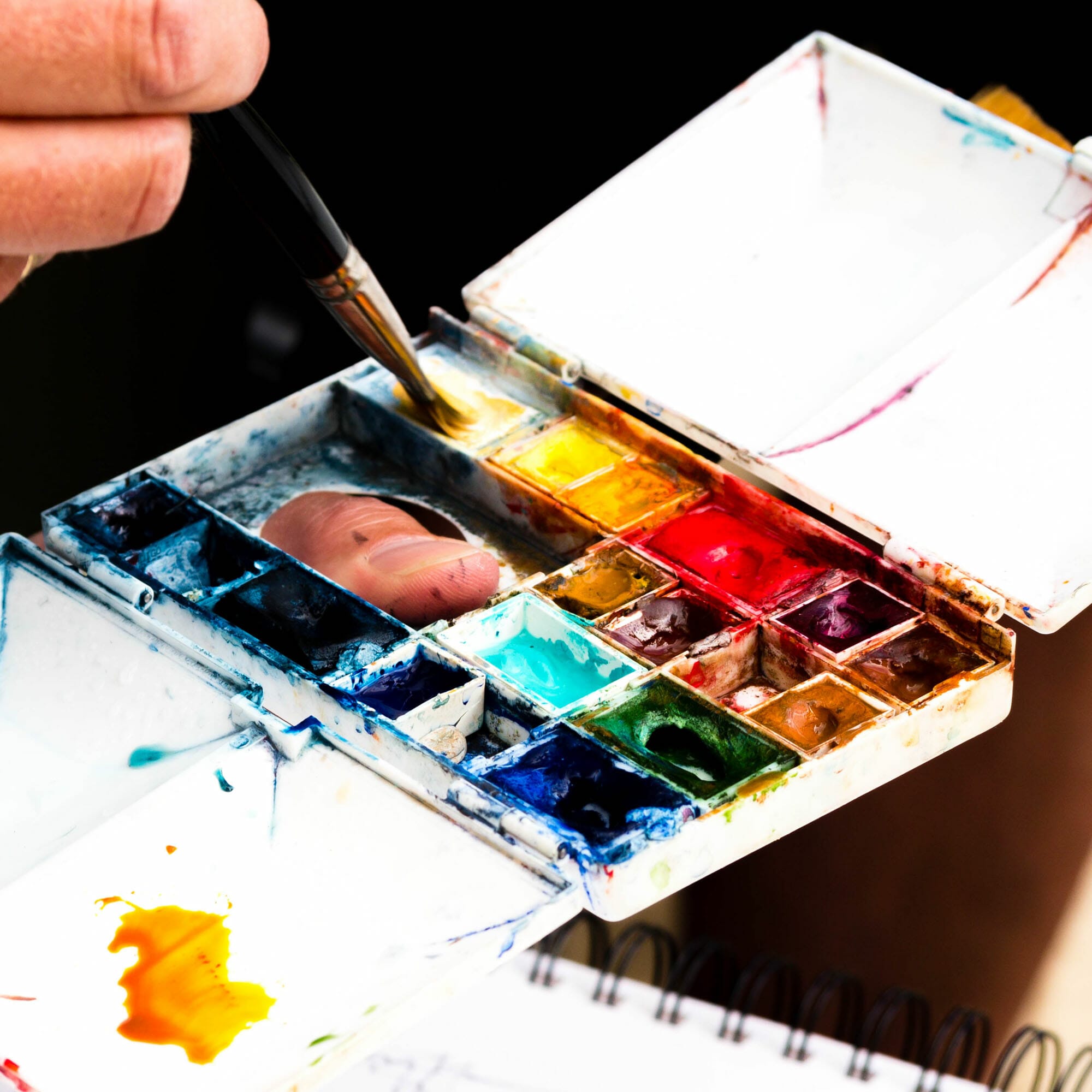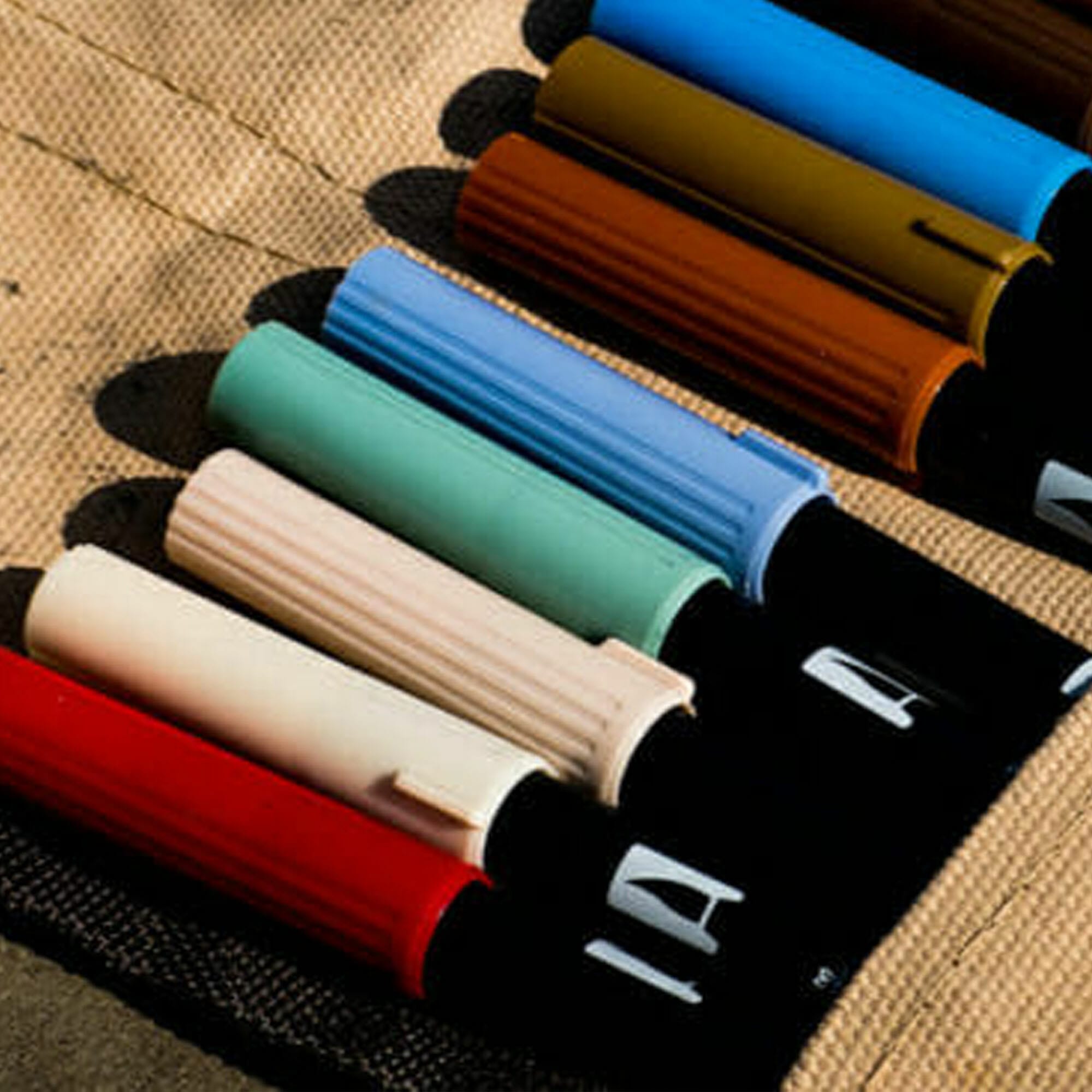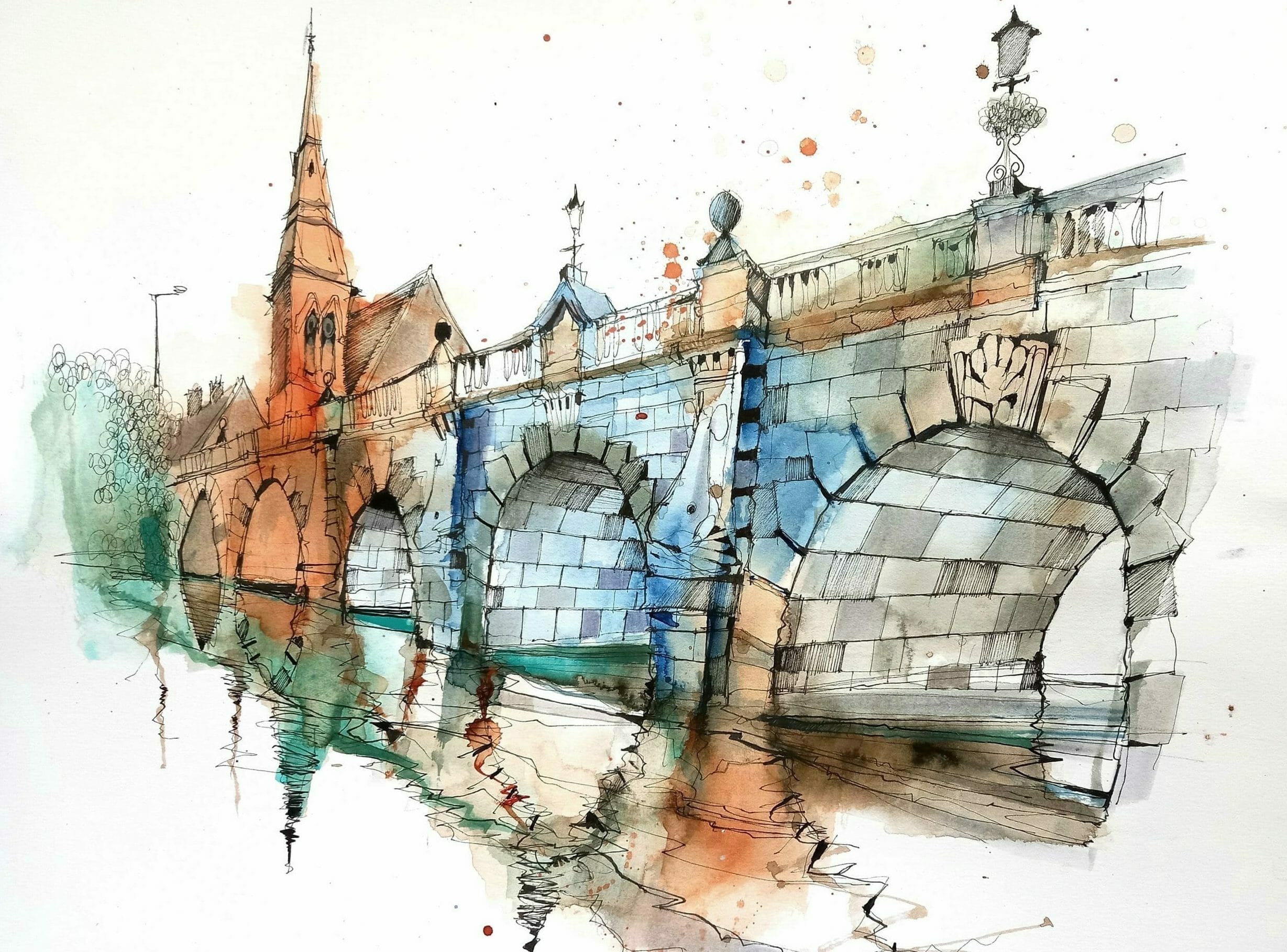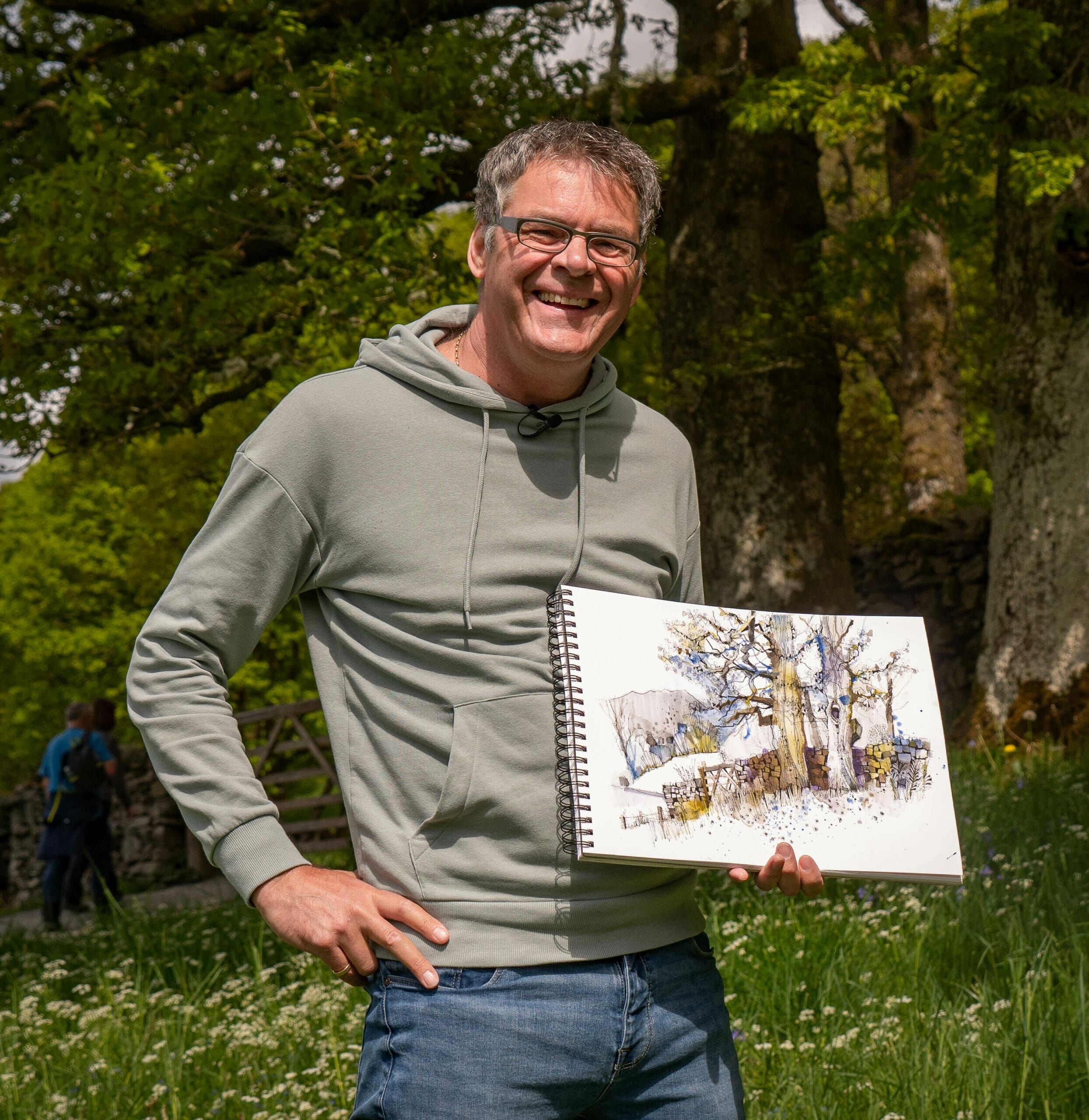How to add colour to your drawings
This quick guide explores the art of adding colour to your sketches. Learn practical techniques, the basics of colour theory, and more to enhance your artwork.
In this blog post, we’ll guide you through how Ian Fennelly adds colour to his sketches and share some top tips to help you get started.
1. UNDERSTANDING COLOUR THEORY
Before we dive into the practical aspects of adding colour to your sketches, it’s essential to grasp the fundamentals of colour theory. Colour theory is the backbone of any successful artwork involving colour. It’s a set of principles and guidelines that help artists make informed choices about colour combinations, contrast, and harmony.
Some artists like to have a physical colour wheel to refer to, but you can also take a look at this online colour wheel to get a better idea and to play with complementary colours.
To simplify your urban sketches and maintain cohesion, consider using a limited colour palette. A restricted set of colours can add harmony to your artwork and create a distinct style. Experiment with different palettes to find one that suits your sketching style.
Achieving harmony in your sketches is all about balancing and coordinating colours effectively. Understanding these principles of colour theory will serve as a strong foundation for your journey into adding colour to your sketches.
2. Materials for Adding Colour
Now that you have a grasp of basic colour theory, let’s explore some of the tools and materials used in our online courses that you can use to add colour to your sketches effectively.

Watercolour Paints
Watercolour paints offer a unique and versatile approach to adding colour to sketches. They can be applied transparently for a delicate wash of colour or layered for richer tones.
Watercolours are a favourite among urban sketchers due to their portability and quick drying time. To use watercolours effectively, you’ll need watercolour paper, brushes, and a palette.

Markers and Pens
Markers and pens, such as alcohol-based markers or fine-tip pens, provide a bold and vivid way to add colour to your sketches. They’re particularly useful for urban sketching, where you may want to work quickly and with precision. Experiment with different marker brands and nib sizes to find the ones that suit your style best.
Other materials
Some urban sketchers also use coloured pencils or digital tools to add colour to their sketches. With a stylus and tablet, you can explore endless possibilities in digital painting. Software like Adobe Photoshop, Corel Painter, or Procreate offers a wide range of brushes and effects to enhance your sketches digitally.
When selecting your tools and materials, consider your personal preferences, the type of sketches you want to create, and your budget. Experiment with different options to discover which ones best suit your style and needs.
Learn more about the materials used by Ian Fennelly by taking our Free Sketching Course.
3. Watercolour Techniques
Urban sketching often demands quick and spontaneous use of colour. Watercolours are an excellent choice for this purpose, as they are portable and easy to work with on location.
In our range of colours, Ian shows you how to add watercolour to your sketches step by step.
Let’s take a look at some of his techniques:
Wet-on-Wet Technique – The wet-on-wet technique involves applying wet watercolour paint to wet paper. This method creates soft, blended, and unpredictable effects, making it ideal for capturing the fluidity and spontaneity of urban scenes. To use this technique, wet your paper with clean water using a brush or a spray bottle. Then, apply your watercolours, allowing them to mix and flow on the damp surface.
Layering and Glazing – Watercolours allow layering and glazing to build depth and complexity in your sketches. Start with light washes and gradually add layers of colour to achieve the desired intensity. To create depth, glaze complementary or contrasting colours over each other. Be patient and allow each layer to dry before adding the next to avoid muddiness.
4. Considering Balance
Preserving white areas or highlights in your urban sketches is crucial to creating a sense of light and contrast. You can achieve this by using masking fluid or by carefully painting around the areas you want to keep white. You can also try to work up the colour slowly to ensure that you don’t ‘over do’ it.

“White space allows the picture to breathe, it balances the picture and allows you to have a focal point.
You have to be quite brave; some people think the more draw and the more I put on, the better it looks. But it doesn’t always work like that.
I also love that it creates mystery and ambiguity because you don’t quite know what’s there”.
– Ian Fennelly
5. Experimenting with Colour
Don’t be afraid to experiment with various techniques and materials to find what works for you. Different techniques can add texture and interest to your urban sketches. Colour theory is a great guide to start with, but sometimes it helps to throw the rulebook out of the window and use colour to portray your emotions and mood.
Watch the video below to hear Ian discuss more colour choices:
Adding colour to your sketches is a rewarding journey that opens up new creative horizons.
Want to learn more and colour your sketches with step-by-step guidance?

